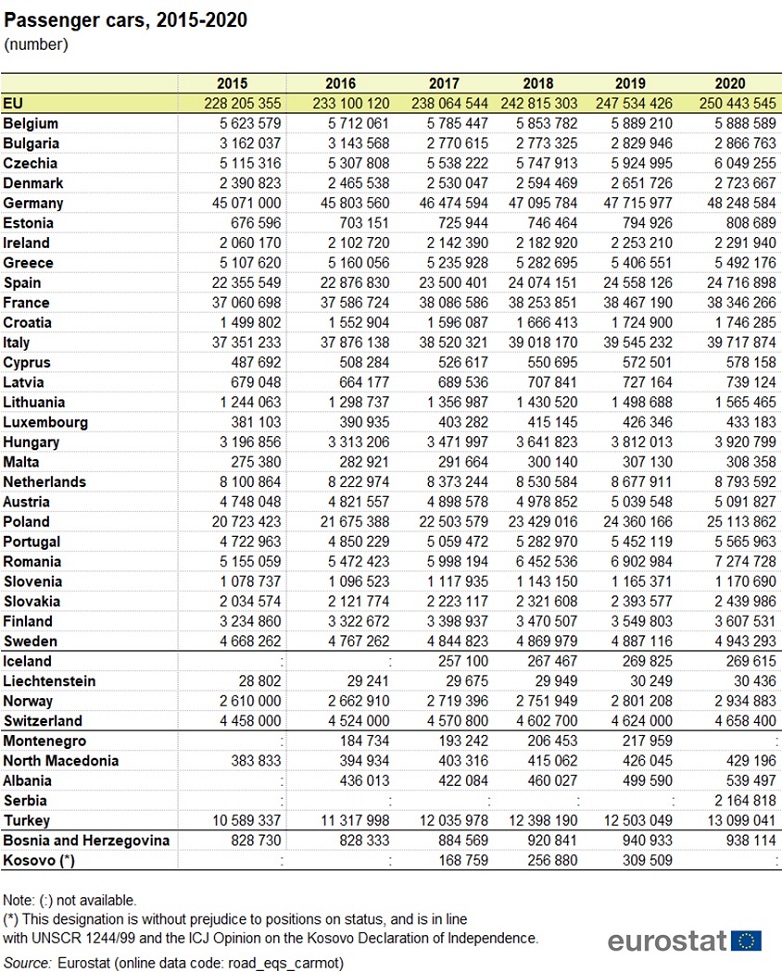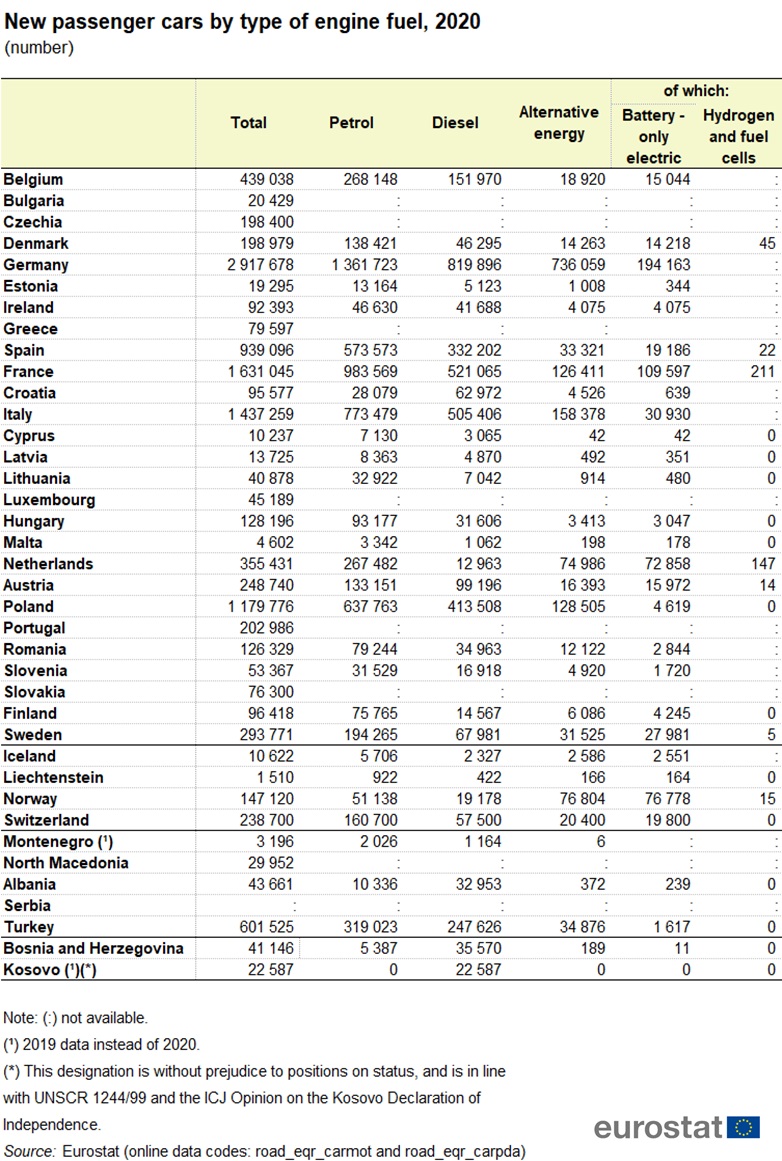Eurostat presented statistics on passenger cars in the EU Member States, providing information on the numbers of vehicles, their age, type of engine fuel etc.
Overall, over the past five years, the passenger car fleet has grown in all EU member states, reaching a total of 250 million cars in 2020, 32 million more than in 2015, an increase of 9.7 %. Germany with 48 million of new cars registered the highest number in the EU, ahead of Italy (40 million cars) and France (38 million cars). In the period from 2015 to 2020, a strong growth in the number of registered passenger cars was observed in Romania (41 %), followed by Lithuania (26 %), Hungary (23 %), and Poland (21 %).
As can be seen from the figure above, the highest number of cars per thousand inhabitants is in Luxembourg (682), Italy (670) and Poland (664). It is worth noting that Luxembourg has the highest share of recently manufactured cars, while Poland has the highest share of cars over 20 years old. Romania with 379 cars per thousand inhabitants has the lowest rate, followed by Latvia (390) and Hungary (403).
Source: Eurostat
A detailed breakdown of passenger car growth by EU country from 2015 to 2020 can be seen in the table below.
According to statistics, among newly-registered passenger cars in 2020 only a small share of them run on alternative fuels. The share of battery-powered electric passenger cars in the EU member states is 0.4%. This ratio seems quite small, but it is worth noting the high growth rate of battery-powered electric passenger cars in EU member states – in 2020 their number exceeded 1 million, which is about 20 times more than in 2013 and 3 times more than in 2018. In 2020, the largest number of new electric cars in the EU was registered in Germany (194 163), France (109 587) and the Netherlands (72 858). By contrast, the smallest number of new electric cars appeared on the roads of Estonia (344), Latvia (351), Lithuania (480) and Croatia (639).
It should be noted that starting in 2017, the share of petrol cars began to exceed the share of diesel cars, and in 2020 this trend finally strengthened. In 2020, the highest shares of gasoline vehicles among new registrations were in Lithuania (80.5%), Finland (78.6%) and the Netherlands (75.3%), Hungary (72.7%), Malta (72.6%), Denmark and Cyprus (both 69.6%), Estonia (68.2%), Sweden (66.1%) and Romania (62.7%). The only country that recorded a higher share of diesel cars among new passenger cars was Croatia (65.9%).
There is a general increase in the share of new registrations of passenger cars running on alternative fuels in the EU member states. Norway is the only country where this share prevails (52.2%). In EU member states, the share of new passenger cars on alternative fuels has always been lower than the share of gasoline and diesel cars, but in 2020 it exceeded 10% in Germany (25.2%), the Netherlands (21.1%), Italy (11.0%), Poland (10.9%) and Sweden (10.7%).
